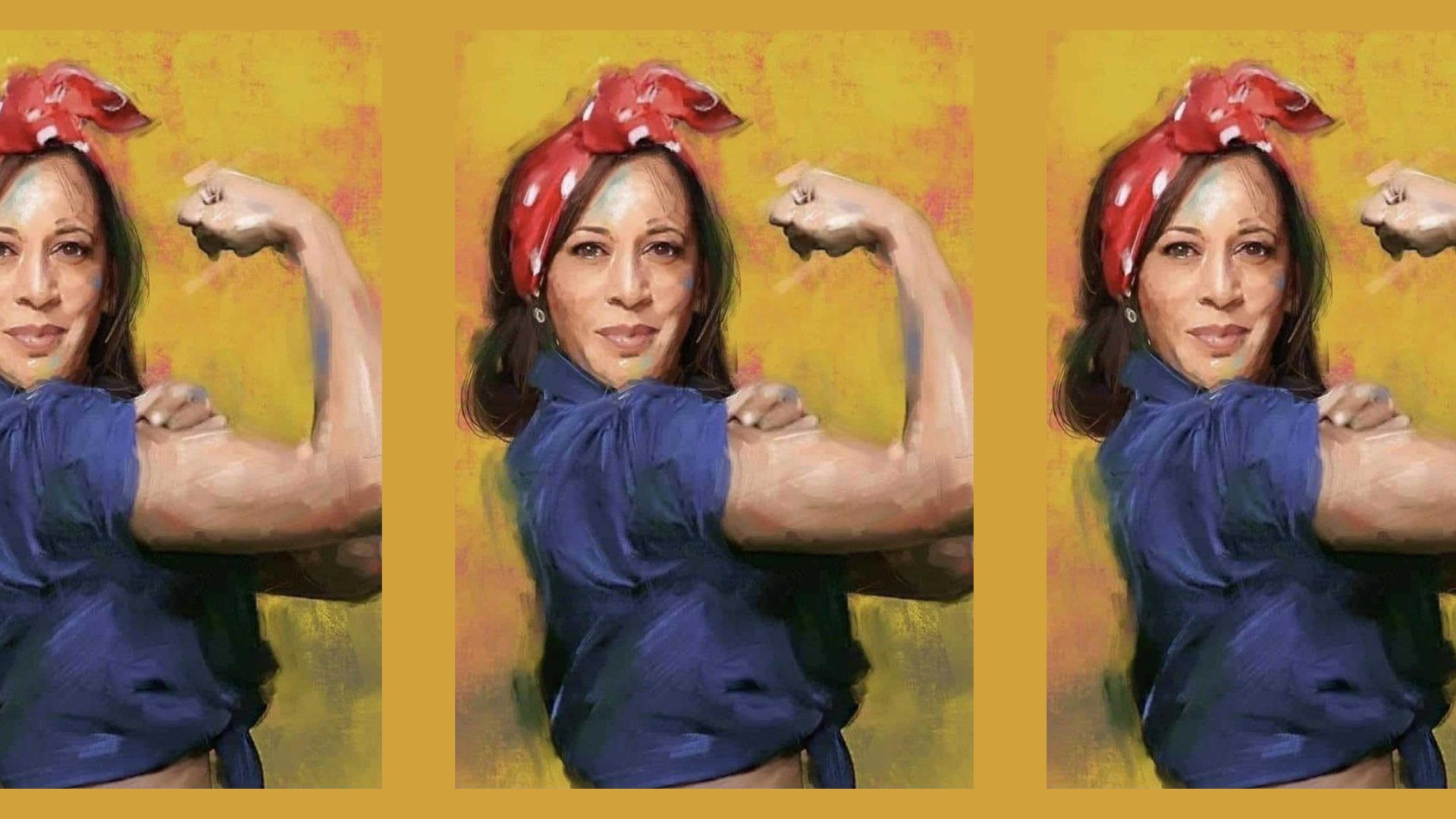Less than 24 hours after she emerged as the likely Democratic presidential nominee, T-shirts went on sale depicting Kamala Harris as Rosie the Riveter over the slogan “We Can Do It”. And I think she can.
But what Harris needs to do, in order to beat Trump, may not be pretty. Because, behind the obvious unsustainability of Biden as candidate for health reasons lay questions of political strategy that are only now being confronted – and indeed which Biden’s grip on the party had prevented from even being asked.
Biden, complain mainstream Democrats, ran from the centre but governed from the left. He was “captured” by the agenda of Bernie Sanders and Alexandria Ocasio-Cortez, to the point where his perceived failures to stem irregular immigration, and his embrace of wokeness, began to alienate traditionally Democratic-voting workers, including growing numbers from the Hispanic and Black communities.
What the centre wants is, naturally, a return to centrism. Some, citing Keir Starmer’s success, want Harris to ditch large parts of Bidenism and attack her own congressional left wing. The left, meanwhile, see her sudden elevation as the opportunity to ditch Biden’s position on the Israel-Hamas war as a way of reconnecting alienated, young, urban voters, and with Muslims.
What Harris herself wants is not yet clear. She is unflinching on women’s reproductive rights, supports a ban on civilian ownership of assault rifles, wants to protect voting rights and resist cuts to Medicare and social security payments. But those are the bread-and-butter issues of the Democrats’ core voting base.
It will be how she defines her platform on the issues that matter to swing voters and non-voters, in a grand total of five swing states, that decide whether she beats Trump or not. And here it is mood music as much as policy that matters.
What has perplexed the American centre, since it became clear Biden was bombing with the electorate, is the failure of economic growth to bring economic security. His CHIPS and Inflation Reduction Acts transformed the US economy, boosting investment in infrastructure and green energy, and delivering the biggest programme of factory building for 100 years.
Yet 42% of Americans believe they are worse off. And in addition to the obvious, inflammatory rhetoric of culture war, stoked by the Republican right, Biden was facing much wider discontent over his handling of irregular immigration at the southern border.
Some 2.5 million people entered the USA via Mexico last year, the majority without permission – and including a growing number from Asia. This sharp rise in irregular migration has left close to a quarter of the USA’s foreign population undocumented – fuelling discontent not just among the racist right, but among many US citizens of colour.
Biden was only persuaded to act on this in June 2024, and his temporary presidential decree triggered an immediate 50% drop in arrivals. So one of the pressing issues for Harris, as a West Coast liberal, is whether to make the asylum ban for irregular migrants permanent.
What the centrists want is for Harris to be harder on migration, more distant from the unions, to fight the left and to shed all association with the wokeness agenda. Some, like Lindsay Mark Lewis of the Washington-based Progressive Policy Institute, believe this was the key to Keir Starmer’s success.
But it’s more complicated. In the first place, Starmer won because voters were sick of the kind of country Britain had become under the Tories: where nothing worked, where crime went unpunished, where the political elite had become circus performers rather than competent administrators.
In the second place, as Rachel Reeves acknowledges openly, Starmerism is a break from the model of free-market globalisation: it is premised on the realisation that offshoring, privatisation and insecure employment not only created a stagnant economy; they have also fuelled democratic decay and the rise of political extremes.
So any attempt to take the Democrats back to the Clinton era would be as mistaken as confusing Starmer’s politics for Blairism.
What Harris needs to learn from Starmer is how to construct a voter coalition in the places that matter, and to do so through actions, not words.
Labour won with 34% of the vote. It won despite losing places like Bristol Central to the Greens, and Batley to a Muslim independent. It won, also, because the Liberal Democrats made spectacular gains in liberal Tory heartlands, and because the right wing conservative vote was split.
Harris will face a unified far right/conservative vote, but has every chance of taking the votes of liberal conservatives if, as Starmer did, she can pull off the same patriotic centrist messaging. She can’t be the change candidate from Bidenism – but she can offer an exit route from perpetual division and culture war.
Labour won because it was unsentimental about aligning its national message with its locally targeted campaign. And it was data-driven by the hour. Among the five swing states, immigration is the top voter issue only in Arizona; in Georgia, Pennsylvania, Wisconsin and Michigan the economy is the top issue. So – as with Starmer – it is on the economy that Harris can win, if she can neutralise the immigration issue where it matters and avoid getting dragged into the culture wars.
But time is her enemy. Starmer had three years to speak to voters through actions, not words; three years of standing in front of the union flag; three years of disassociation and blank answers on stuff that matters to campus debating clubs; three years of saying “we’ve changed”.
Harris, by contrast, has four months. She needs to stop riding the mood of euphoria that has swept through the Democratic voting base, and start empathising with the exasperation of working-class voters with the fact that, despite the headline economic growth figures, their own circumstances feel insecure.
Labour adopted the basic concepts of Bidenomics and called it Securonomics. Harris’s route to the White House depends on landing a few, clear policy offers that will enhance people’s economic security and offer a route out of perpetual cultural division.




